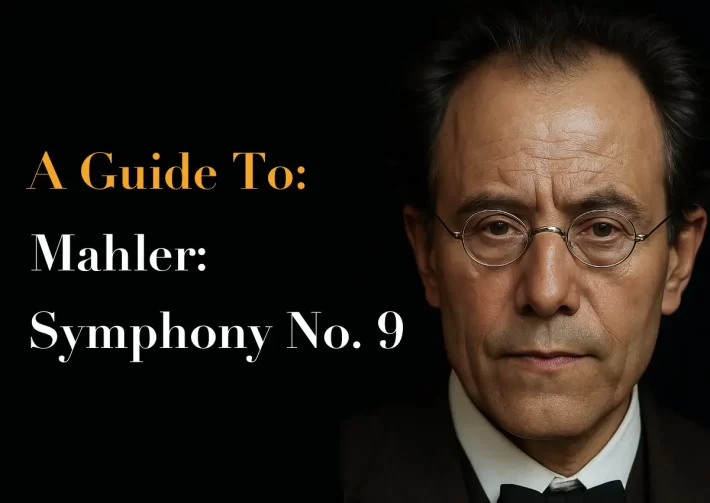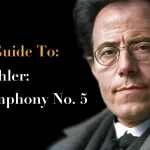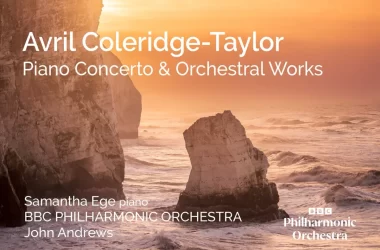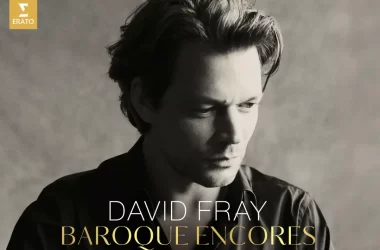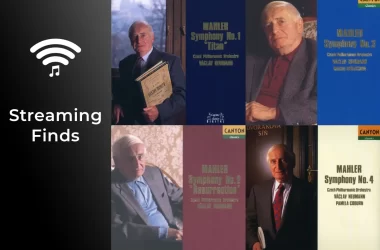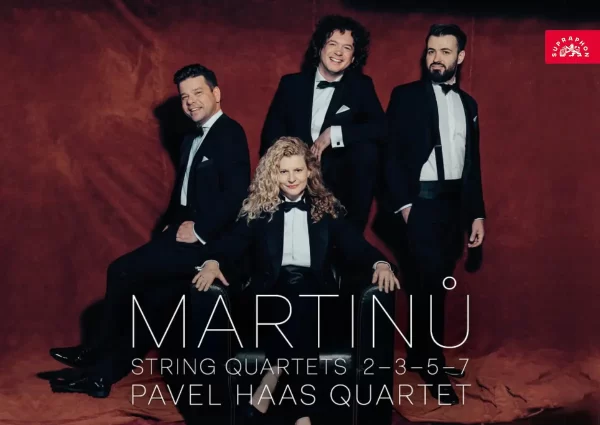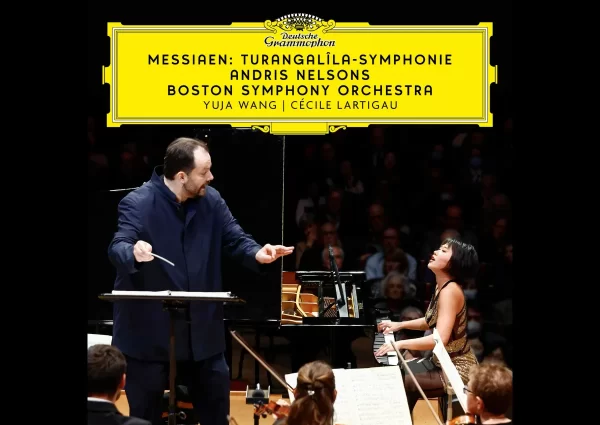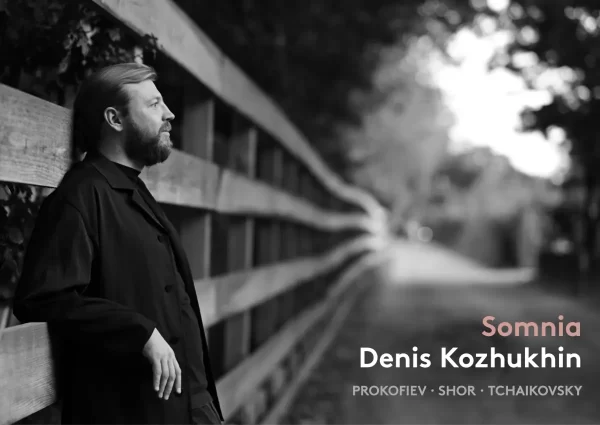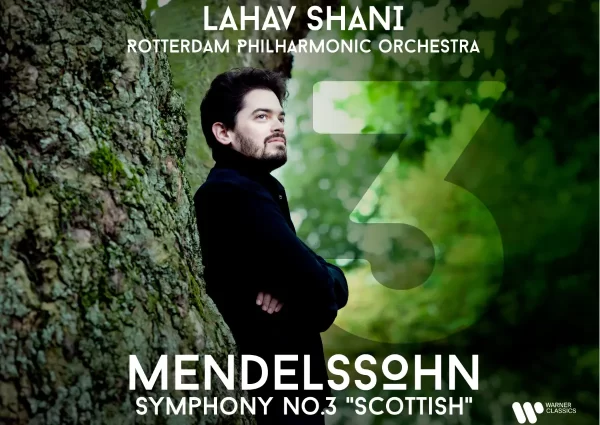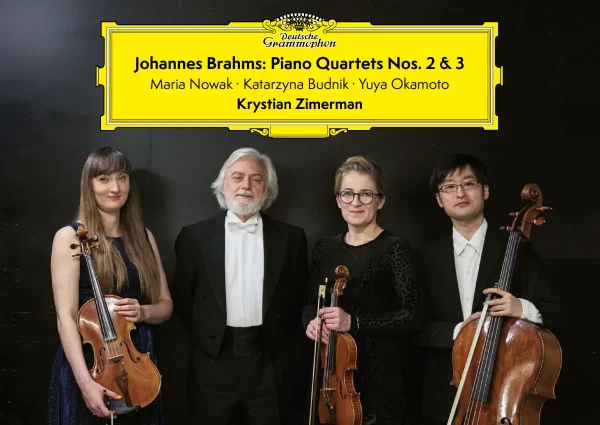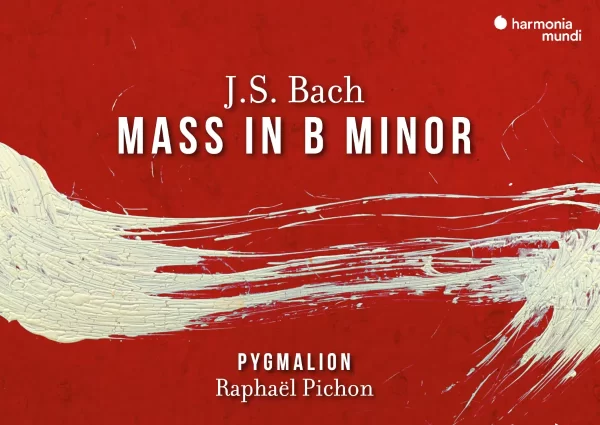Gustav Mahler’s Symphony No. 9 holds a special place as the composer’s final completed symphony. It was written during a period of profound personal crisis and contemplation. Mahler composed the work between 1908 and 1909, amid the lingering trauma of losing his young daughter Maria, his resignation from the Vienna Court Opera, and the diagnosis of a serious heart condition. Facing mortality directly, the Ninth Symphony is often viewed as Mahler’s farewell to life.
Mahler never heard his Ninth Symphony performed, as he passed away in May 1911, before its premiere by Bruno Walter in June 1912. Deeply reflective and introspective, the symphony continues Mahler’s exploration of emotional extremes and profound existential questions, integrating traditional symphonic structures with innovative harmonic and orchestral textures. Even though the symphony includes seemingly more optimistic dance movements, its four movements as a whole are imbued with a poignant sense of finality and acceptance, transcending typical symphonic narrative to become a meditation on life and mortality.
Mahler – Symphony No. 9 – Analysis
Unconventionally structured, Mahler’s Ninth Symphony begins and ends with expansive slow movements, with two central movements based on dance forms. The second movement draws on Austrian Ländler and waltz idioms, while the third is constructed as a fast-paced Rondo-Burleske. This slow–dance–dance–slow sequence diverges from traditional symphonic models and contributes to the work’s unique formal design. Instead of a climactic resolution, the symphony’s trajectory leads toward increasing fragmentation and quietness, emphasizing structural contrast and gradual dissolution.
Movement 1: Andante Comodo (Free Sonata Form)
The expansive first movement follows a free adaptation of sonata form. It opens with a gentle rhythmic pulse in the cellos and harp, setting a mood of quiet introspection and melancholy. The primary theme emerges in muted violins, moving slowly and tenderly. Mahler meticulously weaves delicate textures with solos from woodwinds and horns, creating an atmosphere of nostalgic longing.
The development section (starting at around the 10-minute mark in the first movement) examines the themes and ideas that were introduced earlier, adding turbulent episodes marked by dramatic outbursts in brass and percussion, filled with chromatic tension. Eventually, the agitation subsides, leading into the recapitulation at around 16’00”, where the initial serene theme returns, though now imbued with emotional depth and resignation. The movement concludes with a deeply moving fade into silence.
Movement 2: Im Tempo eines gemächlichen Ländlers (Modified Ternary Form)
The form of this movement has been the subject of differing interpretations. While some analysts describe it as a modified ternary form, others suggest elements of rondo, variation, or a multi-section dance suite. Rather than conforming to a single formal model, the movement unfolds as a series of contrasting dance episodes built on recurring thematic material.
It begins with a deliberately awkward Ländler, marked by irregular rhythms and off-kilter phrasing. This is followed by other dance episodes, including sections that are more driving and rhythmically forceful, occasionally recalling the character of a waltz. Mahler develops and varies these materials across the movement, often juxtaposing them in ways that blur traditional formal boundaries.
The alternation and transformation of these dance elements suggest a distorted take on older stylized forms such as the minuet-and-trio, though no clear pattern dominates. Toward the end, the Ländler theme reappears in a subdued and weary form, bringing the movement to a close with a sense of faded energy and detachment.
Movement 3: Rondo-Burleske (Allegro assai, Rondo Form)
True to its title, the third movement uses a vigorous Rondo form, characterized by a repeated main theme interspersed with contrasting episodes. The opening is aggressive, emphasizing virtuosic passages in strings and woodwinds. Short-lived lyrical interludes appear briefly before being overtaken by frantic energy.
Central to this movement is a sardonic mood, where sophisticated orchestration and brilliant contrapuntal writing amplify bitterness and defiance. The music continuously escalates in complexity, culminating in a chaotic climax before abruptly ending with sharp dissonant chords, paving the way for the contemplative finale.
Movement 4: Adagio
Marked Sehr langsam und noch zurückhaltend (“very slowly and held back”; literally, “reservedly”), the final movement serves as the emotional core of the symphony and a valedictory statement. It is a continuous slow movement in episodic form, structured around a hymn-like theme first introduced by the strings.
At the center of the movement, Mahler quotes directly from the middle section of the Rondo-Burleske, now transformed into a more lyrical and reflective passage – a moment that evokes distance and memory rather than irony. Later, in the final pages, the first violins quietly recall a passage from Mahler’s own song cycle Kindertotenlieder (“The day is fine on yonder heights”), a gesture of intimate personal resonance.
Following several climaxes, the music becomes increasingly fragmented. Phrases lengthen and dissipate, until only isolated gestures remain. In the coda, sound itself seems to unravel as dynamics diminish to near nothing. The movement – and the symphony – closes in utter stillness, a musical farewell rendered with remarkable grace and restraint.
Mahler – Symphony No. 9 – The Best Recordings
Mahler’s Ninth is very well served on record, with each notable orchestra and conductor having recorded it – some multiple times. The Berlin Philharmonic, for instance, has recorded this symphony under conductors such as Herbert von Karajan (1979–80 and 1982), Leonard Bernstein (1979), John Barbirolli (1964), Claudio Abbado (1999), and Simon Rattle (2009). Bernstein and Abbado have also recorded it with the Vienna Philharmonic, as have Lorin Maazel, Simon Rattle, Jascha Horenstein, and others.
To avoid repetition with the same orchestra, the following list includes six recordings that present a diverse range of approaches to the work.
Berlin Philharmonic Orchestra / Herbert von Karajan (1982)
This is Karajan’s second recording of the Ninth with the Berlin Philharmonic, taken from live performances. For many years it was considered one of the greatest Mahler recordings in the catalog. The sound is quintessential late-Karajan Berlin: rich strings, firm bass, and brass that cuts through climaxes. The first movement is especially compelling for its dynamic range and shaping, particularly around the 3-minute mark. The final Adagio stands out for its atypical emotional intensity and expressive playing by the Berlin Philharmonic. Karajan’s earlier, analogue version from the late 1970s is also a fine performance, yet it lacks some of the spiritual intensity found in the digital recording.

Vienna Philharmonic Orchestra / Bruno Walter (1938)
Recorded in 1938, this mono recording has immense historical value: it features the conductor and orchestra that gave the symphony’s premiere in 1912. The playing retains stylistic characteristics of the time – light vibrato in the strings, prominent glissandi, and a brass and woodwind balance typical of early 20th-century Vienna. While ensemble precision is not always consistent, the final movement is particularly well-shaped and, notably, one of the fastest on record. Among modern remasterings, the versions by Naxos and Dutton offer improved clarity and dynamic preservation.
For those who would like to hear the glorious sound of the Vienna Philharmonic in contemporary sound, a new recording by conductor Franz Welser-Möst is available exclusively on Apple Music is available. Other digital version of the symphony by the Vienna Philharmonic are by Lorin Maazel (with not always ideal recording), and by Sir Simon Rattle (part of the box “Simon Rattle Conducts Mahler” by Warner).
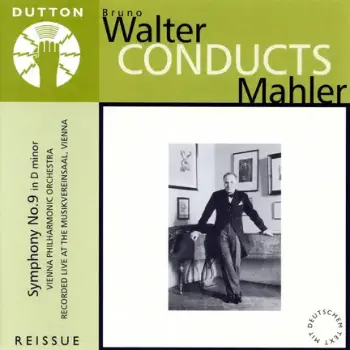
Royal Concertgebouw Orchestra / Riccardo Chailly
One of the strongest digital-era recordings, this version showcases the Concertgebouw in excellent form. The orchestra’s distinctive character is preserved, distinct from the tonal profiles of Berlin or Vienna. The control of dynamic build-up in the first movement is expertly handled, and the dance movements maintain their rhythmic shape without losing the underlying tension. The recorded sound, captured in one of the world’s best concert halls, highlights both detail and warmth.
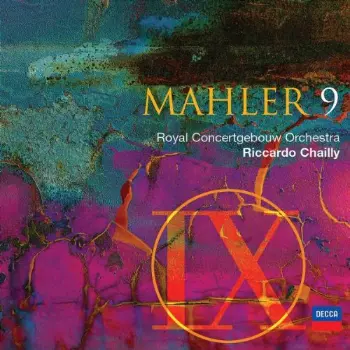
New Philharmonia Orchestra / Otto Klemperer
Klemperer focuses on architectural clarity and the symphony’s formal structure, delivering a firm and often direct interpretation. The famed Klemperer–New Philharmonia sound is fully present: robust, unhurried, and serious in tone. While the central dance movements feel heavy by modern standards, the outer movements benefit from relatively flowing tempos and a sense of restraint. The final Adagio is notable for its balance of weight and control. Recent transfers have improved the transparency of this important recording.

Bamberg Symphony Orchestra / Jonathan Nott
Jonathan Nott and the Bamberg Symphony offer a refined and articulate reading. The transparency of Mahler’s intricate orchestration comes through clearly, without sounding clinical or detached. Vibrato is used sparingly by the strings, while the brass and woodwinds contribute color without overwhelming the ensemble texture. The result is a uniquely blended and balanced performance, aided by a natural-sounding and detailed recording.

San Francisco Symphony / Michael Tilson Thomas
Tilson Thomas and the San Francisco Symphony present a more lyrical and optimistic view of the Ninth. The first movement features notably delicate string playing, particularly in the accompanying lines of the main theme. The central dance movements are lighter and more playful than in most recordings – especially the third movement, where contrapuntal textures emerge with a sense of wry humor. The final movement features impressively hushed dynamics, with a particularly quiet solo violin and woodwind passage at 5:00 and a sensitive fade in the closing bars. Overall, this is a well-balanced and thoughtfully played interpretation, captured in excellent sound.
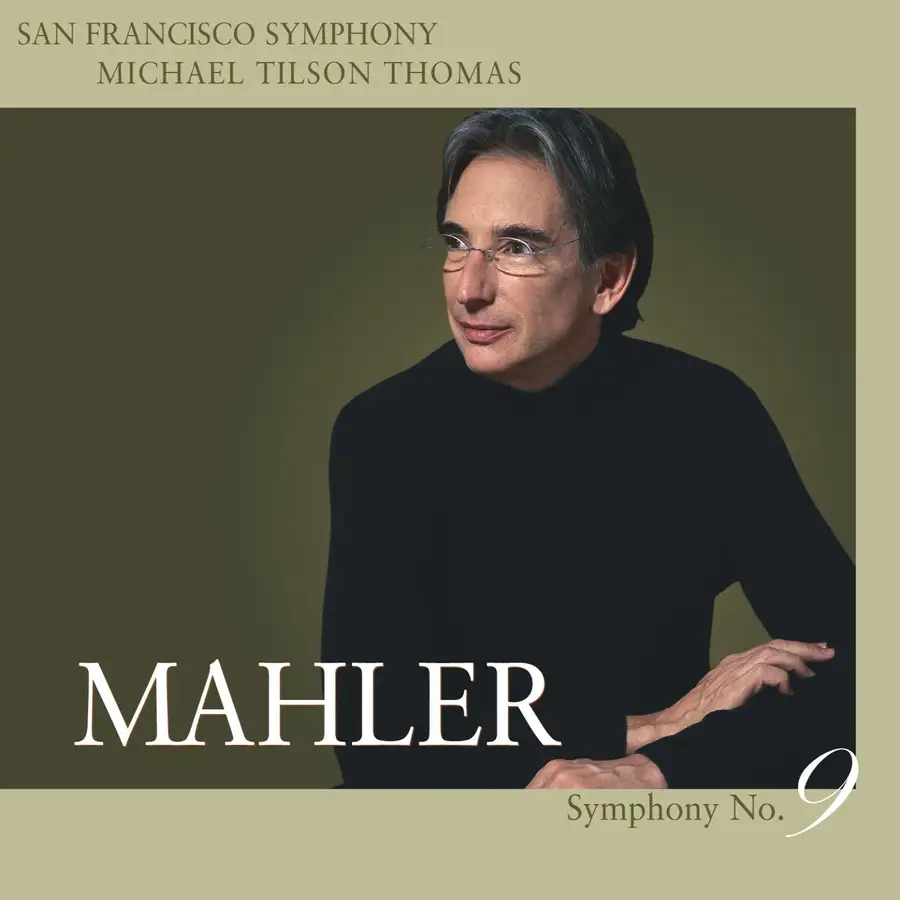
Top Image: ©️ The Classic Review, AI generated
➡️ Read our reviews of albums with Mahler’s 9th symphony.
Liked The Free Guide? Support Us
We hope this guide has helped you navigate the wonderful world of classical music! If you enjoyed this free resource, consider making a donation to The Classic Review. There is a lot of work done in order to provide you with original content of classical music, such as guides and reviews of new albums; Your generosity helps us keep going. Every contribution, big or small, allows us to continue sharing our passion for classical music with readers like you.
Donate Here

